
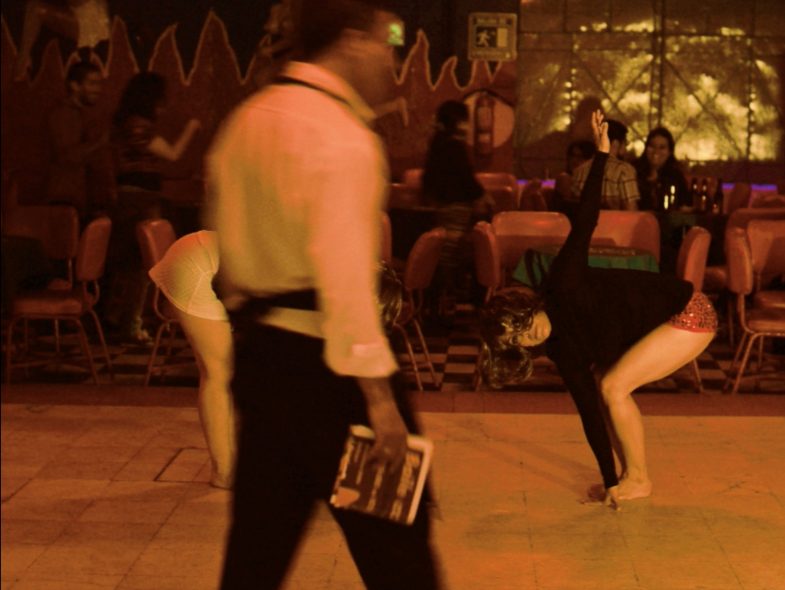
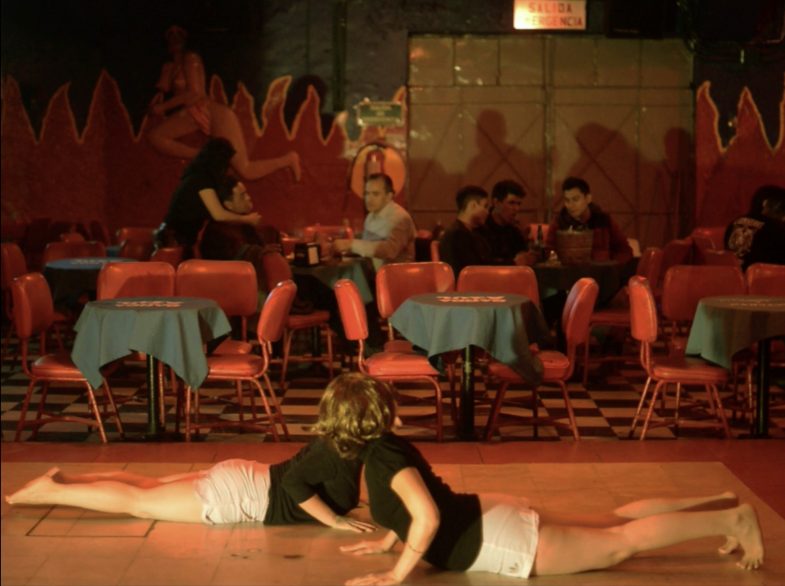
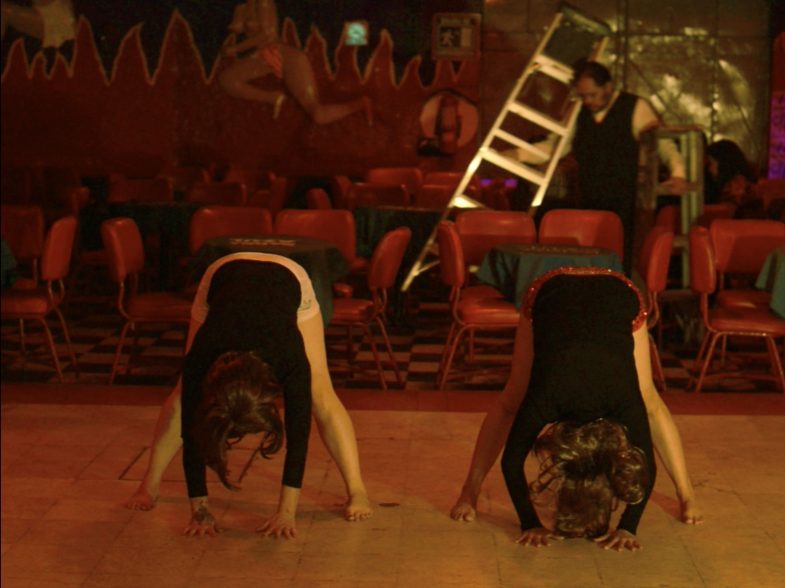
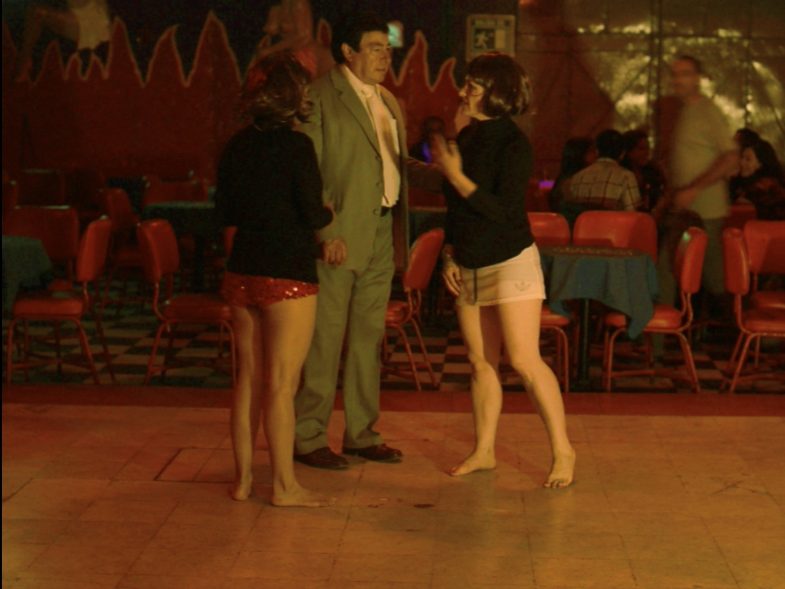
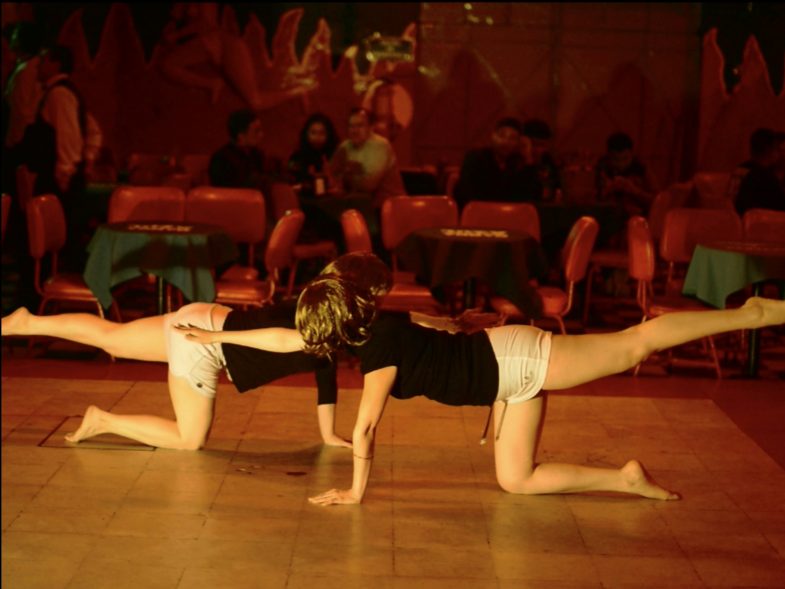
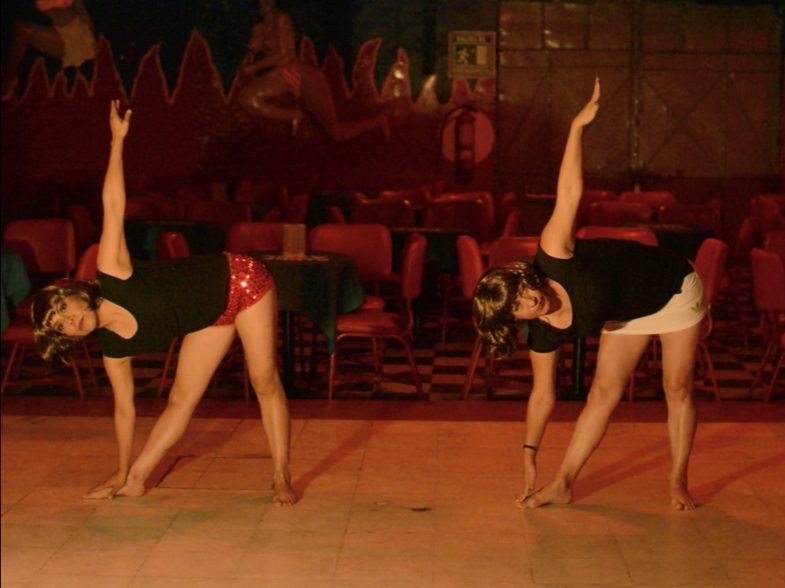
The Mexicanas (2017), which I published in book form in 2020, is the first project I did in the city. In The Mexicanas (2017), initially published as a book, is the first project I made in the city in Mexico. In this project I combined, in an ironic way, both realities: the superimposition of materials, signs and structures of urban space. The forms of a violent patriarchy fester, with the images I took of these women in their workspaces. In addition, in what I initially considered a gesture of feminine reappropriation of these dance venues, I began to invite acquaintances and friends to share poses and sessions with the ficheras. This game with the impurity of documentary portraiture also led me to try out ways of constructing gestures that were as far away as possible from the two poles between which this type of work usually oscillates: the poses I constructed with them did not correspond either to the spectacular gesture that stigmatizes them inside the dance hall, or the documentary gesture that naturalizes them in their private spaces. But neither did I try to reappropriate nor comment on them. Instead, we started practicing yoga.
Working around yoga completely upended my priorities and my approach to my photographic practice. It was no longer posed sessions, but long times of body work together. The room on the second floor of the Barba Azul salon -a mythical dance club in the Obrera neighborhood in Mexico City- was in disuse, so we had started to use it as a studio. However, as I met with more and more girls, we decided to occupy the ballroom. That’s when I started teaching yoga classes. I would meet them on the dance floor an hour before the start of their day, but the classes would last a little longer than the opening time: just long enough for the male clientele to start taking their seats at the tables surrounding the dance floor and the band to start playing the first notes of salsa. Meanwhile, we greeted the sun, uniformed, with blonde wigs.
For two years I kept a video record of these classes. I would mount the camera on a tripod and record, in a fixed shot, the entire class. The situation inverted the logic of the space: they waited seated while they were concerned only with their own bodies, in the center of the scene. From this material emerges Lección de mambo (2017), the first of my pieces in which photography gives way to the relational aspect and the confrontation of behavioral codes in social space. Lección de mambo is a slideshow that documents this work and collects some of the songs that accompanied this process.
Since Lección de mambo, my work has been moving away from the strictly photographic and I have approached other ways of considering the relationship with the body and the image: thus, I have changed the photo shoot for the workshop or class, the posing for physical work, and photography for the video recording of various activities. However, I maintain one of the axes that have defined my work since my first series: a willingness to confront, invert, or simply play with dominant codes that govern our social interaction and determine our positions according to gender.
